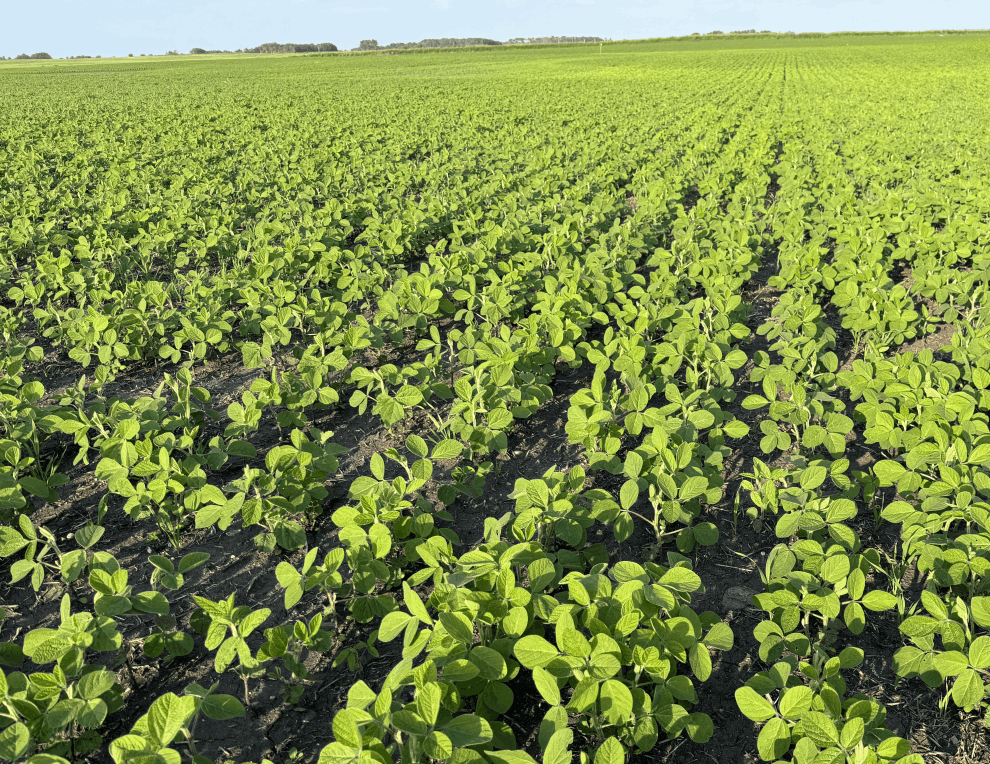In this area, disease and insects are usually not a big concern. Like peas, beans are susceptible to early season seedling diseases and root rots like Fusarium spp., Pythium spp., and Rhizoctonia solani[1]. Phytopthora sojae is a soybean specific disease and can occur anytime throughout the season[1][2]. These diseases can be controlled, or suppressed, by using a registered seed treatment. Cutworms and wireworms can also affect the crop in early stages[2] and can be alleviated using an insecticide seed treatment.
Grasshoppers, soybean aphid and green cloverworm can all affect soybeans in Manitoba[2]. There are multiple diseases that can infect the crop, but a fungicide is often not warranted due to the low disease pressure in this area.
Iron deficiency chlorosis is common in soybeans. It is a nutrient deficiency and causes interveinal yellowing in new leaf tissue. It is commonly caused by high carbonates, especially in wet years, but can be impacted by anything that causes the plant stress[3] (cool soil temperatures, water logging, herbicide stress, soil compaction, high soil nitrate, etc.) The plant can typically grow out of it. Foliar sprays are not effective[3].
Beans typically will dry down naturally, but if there are green spots or weed control is warranted, a pre-harvest application can be made. The following are registered.

